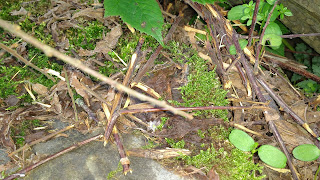I was fortunate enough to visit Kew Orchid Festival at the weekend. So many beautiful colours on display. But the thing that fascinates me most about orchids is their aerial roots.
Aerial roots are typical of epiphytes; plants that don't grow in soil but grow on the branches of trees high above the ground. Aerial roots are primarily for absorbing water vapour from the air.
However some years ago, the scientists at Kew found something interesting. Try as they might, they couldn't get orchids to grow. Until they discovered the symbiotic relationship Orchids have with fungi. Fungi are heterotrophic (breakdown organic molecules) and they provide orchids with essential nutrients. So now the key to orchid growing success has been solved; just add fungus!







